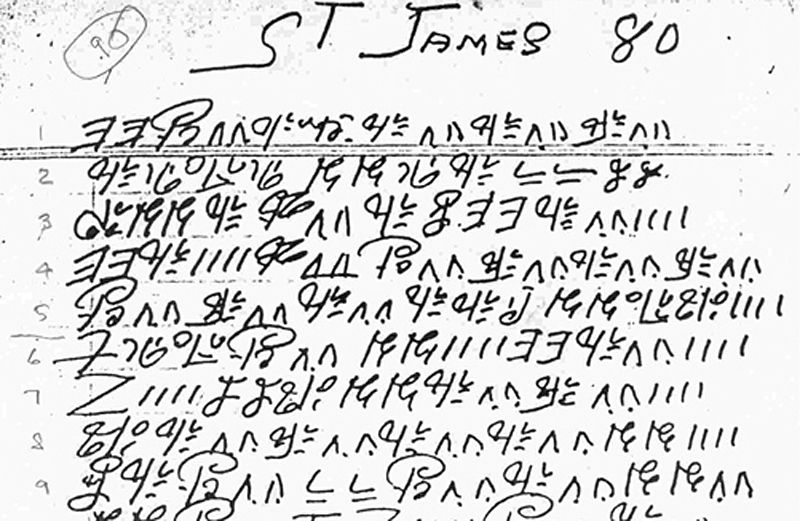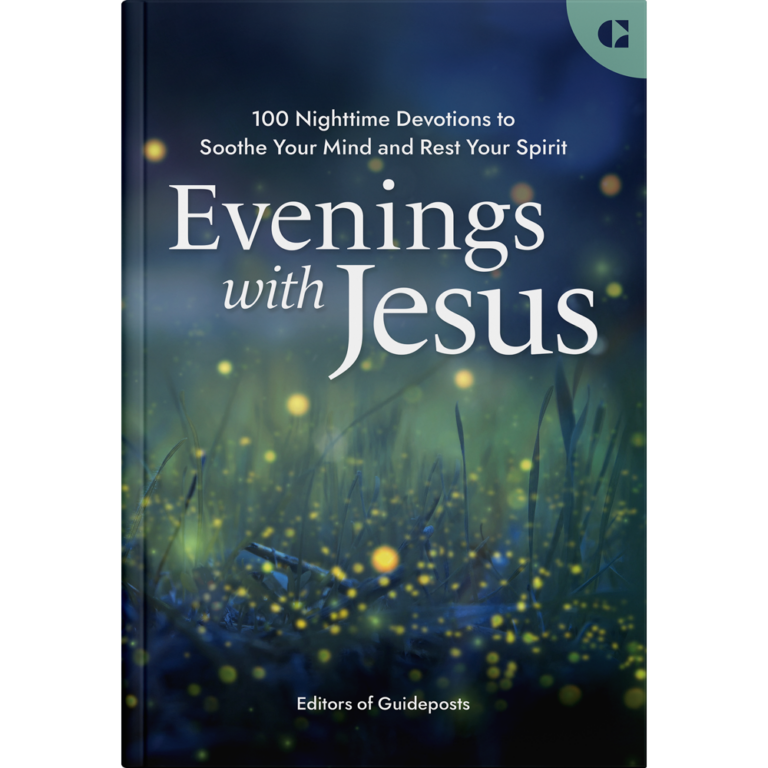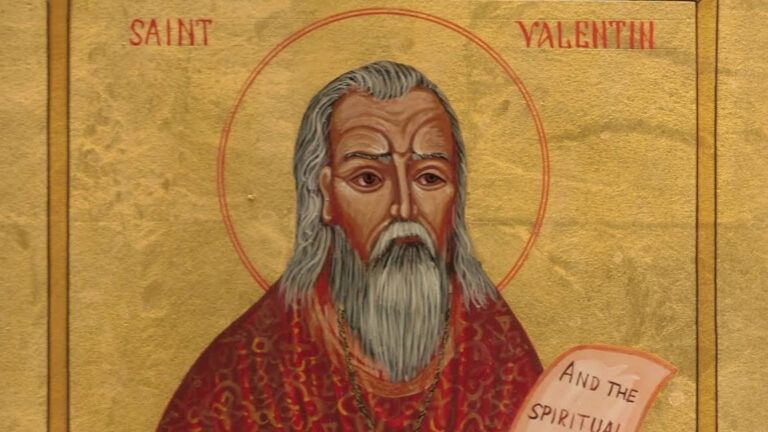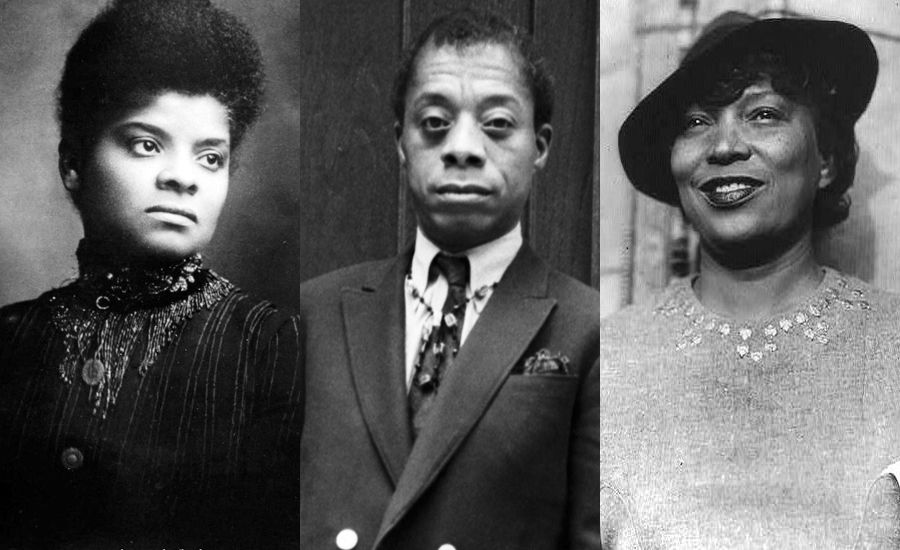It’s one of America’s most mysterious and fascinating works of folk art: The Throne of the Third Heaven of the Nations’ Millennium General Assembly, part of the permanent collection at the Smithsonian’s National Museum of American Art in Washington, D.C.
We told you all about James Hampton’s masterpiece in our story in Mysterious Ways; now you can help researchers uncover more of the story…
In addition to his 180+ piece installation, Hampton composed over 150 pages of undecipherable code entitled, The Book of the 7 Dispensations by St. James. He claimed the language was of divine origin.
Over the years, many scholars and art historians have attempted to unlock the meaning, but few have been successful. Some theorize that James’ writings derive from African religious practices, also referred to as visionary writing, or are a textual representation of speaking in tongues.
Dennis Stallings, an independent researcher of coded documents, has conducted a substantial investigation into Hampton’s secret writings. They are not indecipherable gibberish, he believes.
“Hampton writes what are obviously the same ‘words’ at corresponding spots in two different drawings of tablets of the Ten Commandments,” Stallings says. “This shows that it is very unlikely that his writings are the visual equivalent of speaking in tongues.”
That doesn’t mean deciphering “Hamptonese” is easy. First Stallings matched each symbol to an English letter in order to transcribe the pages into his computer. Then he ran the document through a statistical analysis program to look for patterns.
“E” is the most common letter in English, so if Hampton’s letters corresponded directly with English letters, you could find “E” by looking for the most common symbols. Stallings discovered, it wasn’t that simple.
Hampton’s letter forms could be variations of Adinkra symbolism, or his code could be derived from another language, such as Gullah, a Creole language spoken on the South Carolina coast, not far from Hampton’s hometown.
Can you help decode James Hampton’s mysterious manuscripts? Examine the pages below and post your translations (click on the images to see larger versions). We’d love to see what you come up with!
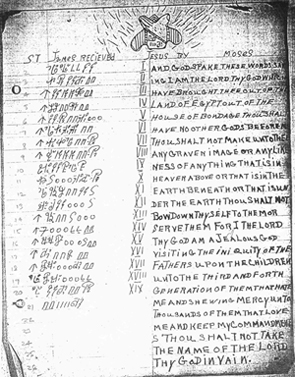 |
Read Danielle's story about Hampton's life and work!
